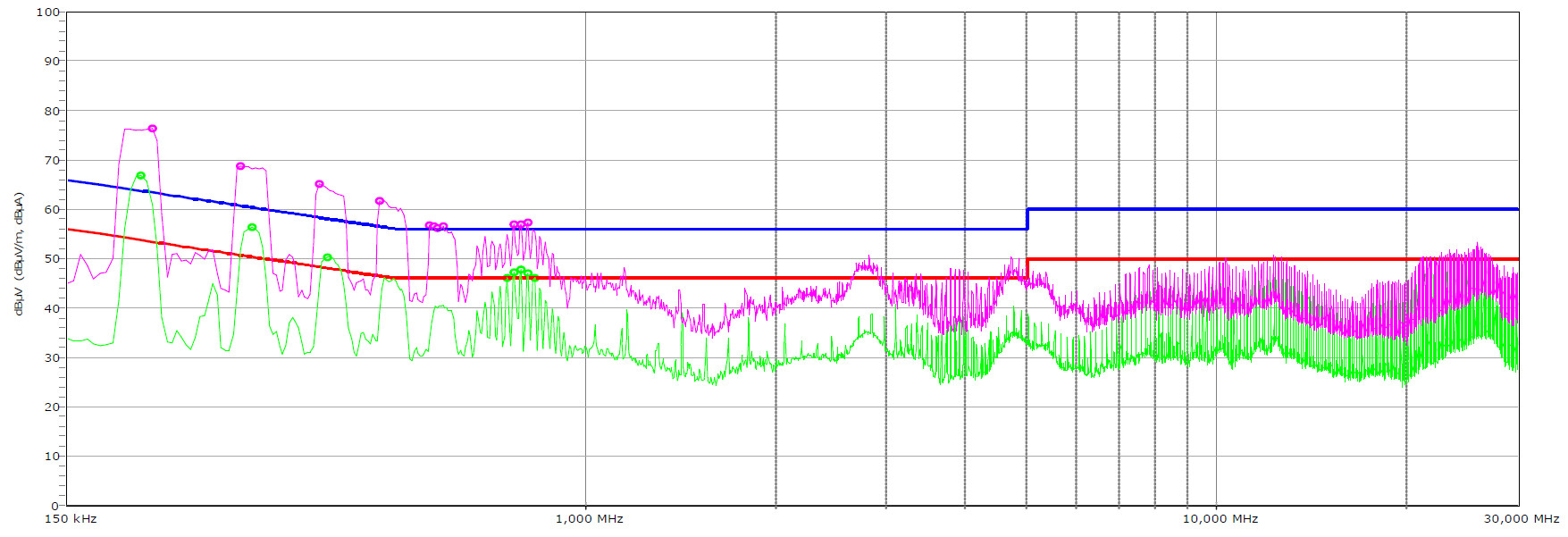Why you can trust Tom's Hardware
Advanced Transient Response Tests
For details about our transient response testing, please click here.
In the real world, power supplies are always working with loads that change. It's of immense importance, then, for the PSU to keep its rails within the ATX specification's defined ranges. The smaller the deviations, the more stable your PC will be with less stress applied to its components.
We should note that the ATX spec requires capacitive loading during the transient rests, but in our methodology, we also choose to apply a worst case scenario with no additional capacitance on the rails.
Advanced Transient Response at 20% – 20ms
| Voltage | Before | After | Change | Pass/Fail |
| 12V | 12.310V | 12.049V | 2.11% | Pass |
| 5V | 5.067V | 4.946V | 2.38% | Pass |
| 3.3V | 3.393V | 3.142V | 7.41% | Pass |
| 5VSB | 4.991V | 4.924V | 1.34% | Pass |
Advanced Transient Response at 20% – 10ms
| Voltage | Before | After | Change | Pass/Fail |
| 12V | 12.309V | 12.058V | 2.04% | Pass |
| 5V | 5.067V | 4.918V | 2.93% | Pass |
| 3.3V | 3.393V | 3.154V | 7.04% | Pass |
| 5VSB | 4.991V | 4.902V | 1.78% | Pass |
Advanced Transient Response at 20% – 1ms
| Voltage | Before | After | Change | Pass/Fail |
| 12V | 12.309V | 12.063V | 2.00% | Pass |
| 5V | 5.066V | 4.911V | 3.06% | Pass |
| 3.3V | 3.393V | 3.155V | 7.02% | Pass |
| 5VSB | 4.991V | 4.920V | 1.43% | Pass |
Advanced Transient Response at 50% – 20ms
| Voltage | Before | After | Change | Pass/Fail |
| 12V | 12.255V | 12.012V | 1.98% | Pass |
| 5V | 5.024V | 4.898V | 2.50% | Pass |
| 3.3V | 3.359V | 3.096V | 7.83% | Fail |
| 5VSB | 4.935V | 4.868V | 1.35% | Pass |
Advanced Transient Response at 50% – 10ms
| Voltage | Before | After | Change | Pass/Fail |
| 12V | 12.254V | 12.018V | 1.93% | Pass |
| 5V | 5.024V | 4.869V | 3.08% | Pass |
| 3.3V | 3.359V | 3.109V | 7.45% | Fail |
| 5VSB | 4.935V | 4.835V | 2.03% | Pass |
Advanced Transient Response at 50% – 1ms
| Voltage | Before | After | Change | Pass/Fail |
| 12V | 12.254V | 12.028V | 1.85% | Pass |
| 5V | 5.023V | 4.866V | 3.12% | Pass |
| 3.3V | 3.360V | 3.109V | 7.49% | Fail |
| 5VSB | 4.935V | 4.834V | 2.05% | Pass |

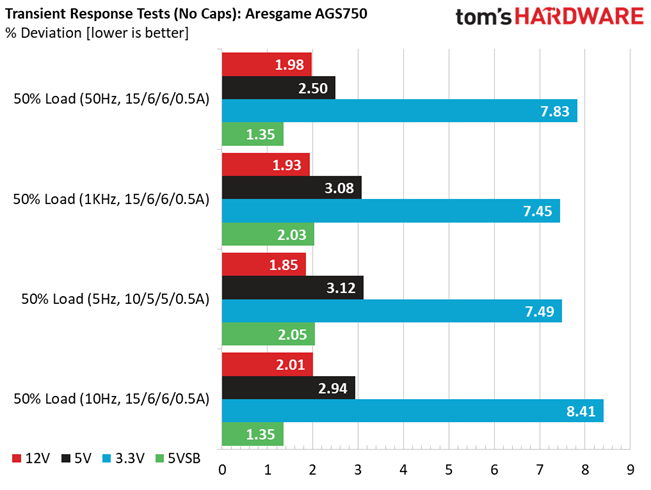
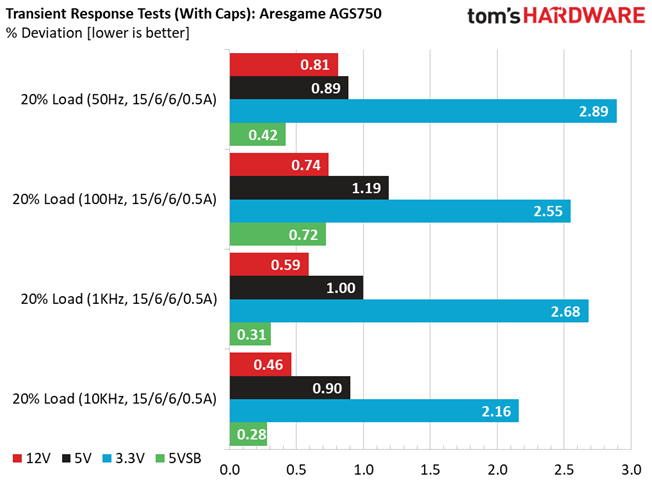

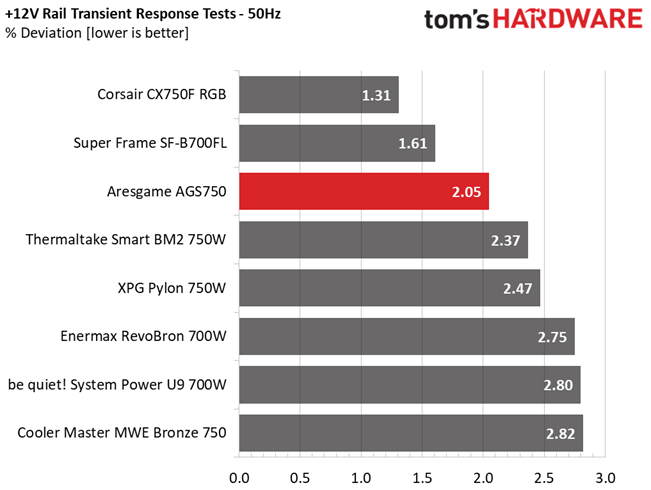

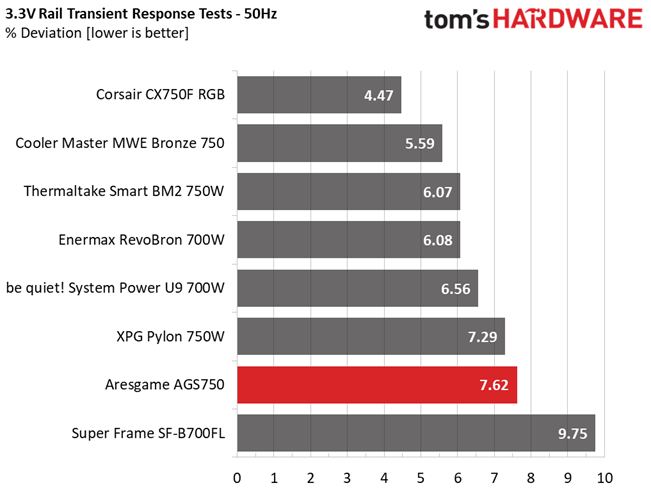
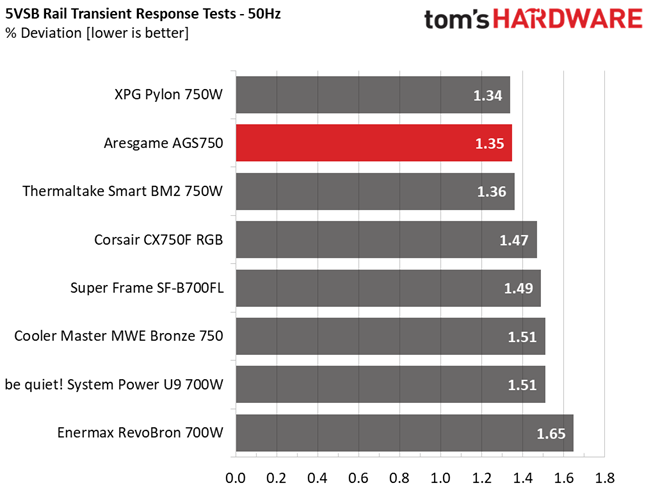
Transient response at 12V is satisfactory, for the category's standards, at least, and quite good at 5V and 5VSB. On the contrary, 3.3V rail's transient response is terrible.
Turn-On Transient Tests
In the next set of tests, we measure the PSU's response in simpler transient load scenarios—during its power-on phase. Ideally, we don't want to see any voltage overshoots or spikes since those put a lot of stress on the DC-DC converters of installed components.
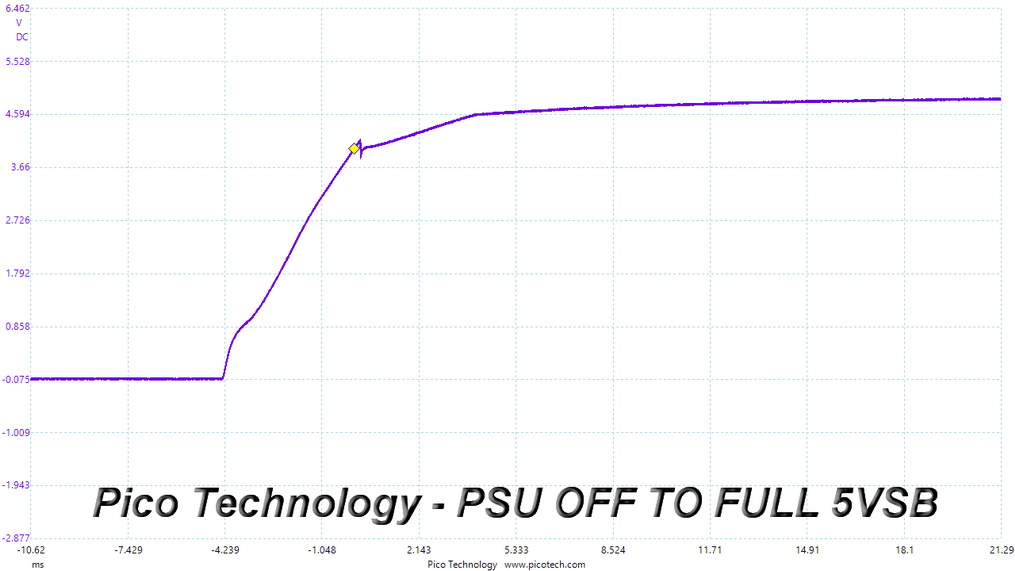
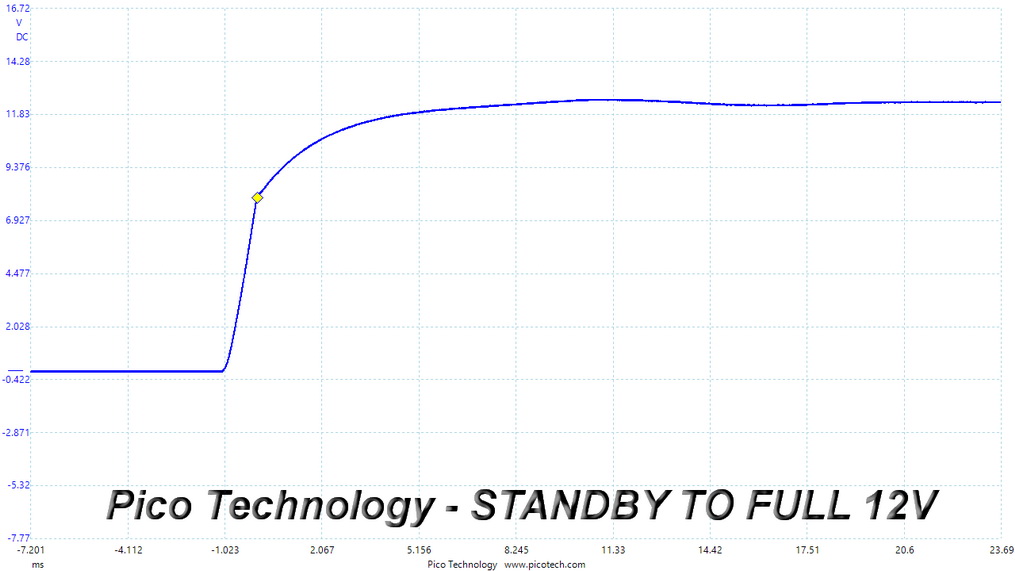
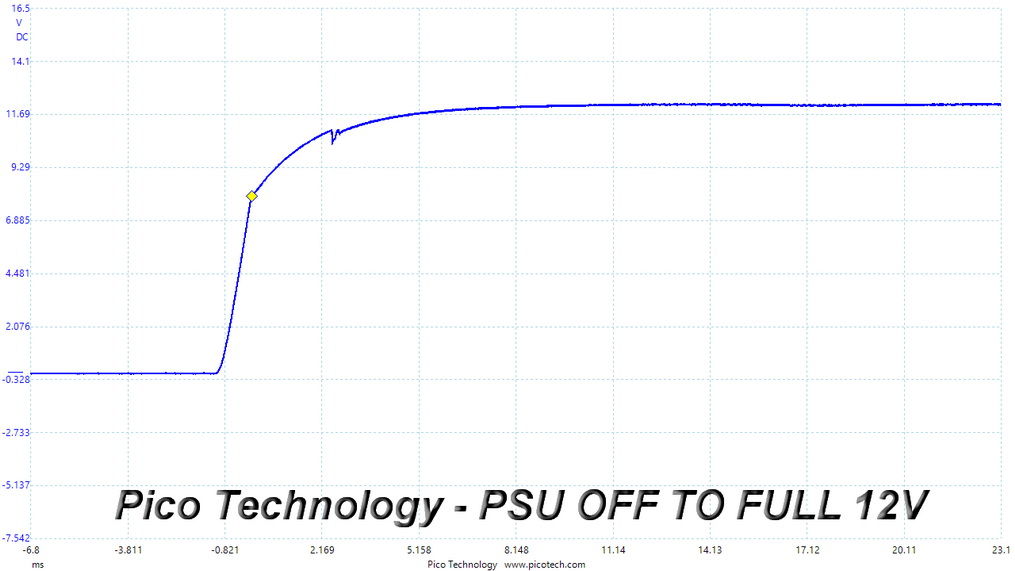
Turn-on transient response is not perfect, for sure, but you cannot call it bad, either.
Power Supply Timing Tests
There are several signals generated by the power supply, which need to be within specified, by the ATX spec, ranges. If they are not, there can be compatibility issues with other system parts, especially mainboards. From year 2020, the PSU's power-on time (T1) has to be lower than 150ms and the PWR_OK delay (T3) from 100 to 150ms, to be compatible with the Alternative Sleep Mode.
Get Tom's Hardware's best news and in-depth reviews, straight to your inbox.
| T1 (Power-on time) & T3 (PWR_OK delay) | ||
|---|---|---|
| Load | T1 | T3 |
| 20% | 48ms | 328ms |
| 100% | 48ms | 328ms |
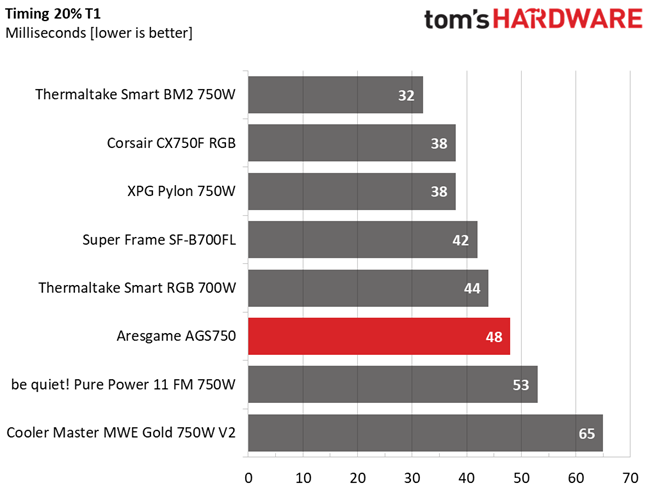
PSU Timing Charts
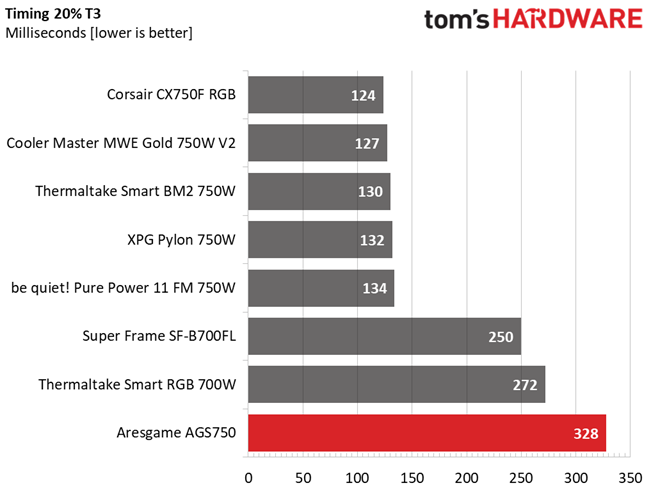
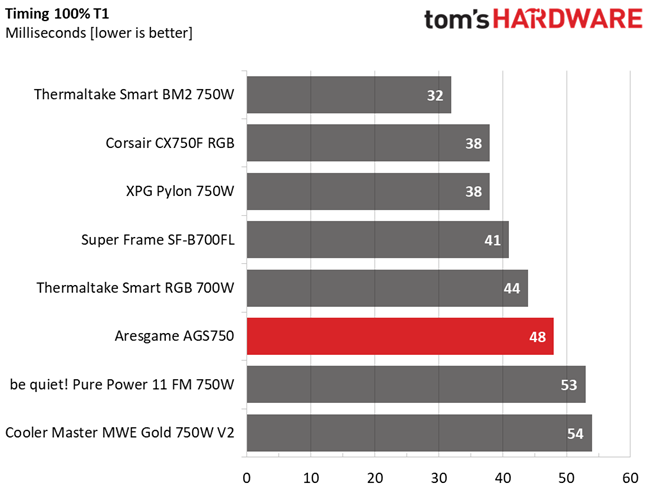

The Power-on time is low so that the PSU won't have an issue even with "picky" mainboards. The PWR_OK delay is out of the 100-150ms region, so there is no support for alternative sleep modes.
Ripple Measurements
Ripple represents the AC fluctuations (periodic) and noise (random) found in the PSU's DC rails. This phenomenon significantly decreases the capacitors' lifespan because it causes them to run hotter. A 10-degree Celsius increase can cut into a cap's useful life by 50%. Ripple also plays an important role in overall system stability, especially when overclocking is involved.
The ripple limits, according to the ATX specification, are 120mV (+12V) and 50mV (5V, 3.3V, and 5VSB).
| Test | 12V | 5V | 3.3V | 5VSB | Pass/Fail |
| 10% Load | 15.7 mV | 23.7 mV | 17.8 mV | 9.5 mV | Pass |
| 20% Load | 14.2 mV | 24.2 mV | 16.8 mV | 10.8 mV | Pass |
| 30% Load | 16.2 mV | 25.4 mV | 18.2 mV | 11.7 mV | Pass |
| 40% Load | 17.5 mV | 25.5 mV | 18.7 mV | 12.8 mV | Pass |
| 50% Load | 21.1 mV | 28.5 mV | 22.7 mV | 15.5 mV | Pass |
| 60% Load | 27.5 mV | 32.6 mV | 26.0 mV | 18.2 mV | Pass |
| 70% Load | 34.4 mV | 34.6 mV | 30.0 mV | 21.4 mV | Pass |
| 80% Load | 41.7 mV | 37.9 mV | 32.6 mV | 23.6 mV | Pass |
| 90% Load | 49.2 mV | 39.4 mV | 36.1 mV | 26.5 mV | Pass |
| 100% Load | 67.1 mV | 43.9 mV | 43.0 mV | 32.1 mV | Pass |
| 110% Load | 77.1 mV | 46.8 mV | 47.1 mV | 34.4 mV | Pass |
| Crossload 1 | 18.2 mV | 34.2 mV | 28.0 mV | 12.5 mV | Pass |
| Crossload 2 | 16.8 mV | 39.3 mV | 26.7 mV | 12.4 mV | Pass |
| Crossload 3 | 16.1 mV | 27.4 mV | 24.9 mV | 11.3 mV | Pass |
| Crossload 4 | 64.7 mV | 36.0 mV | 36.9 mV | 26.3 mV | Pass |
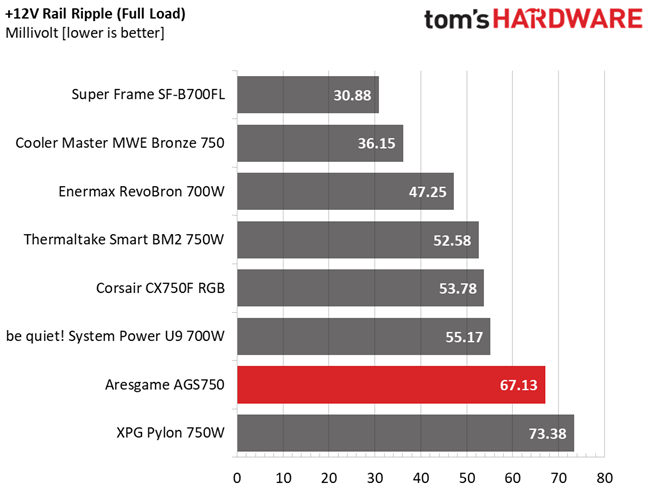
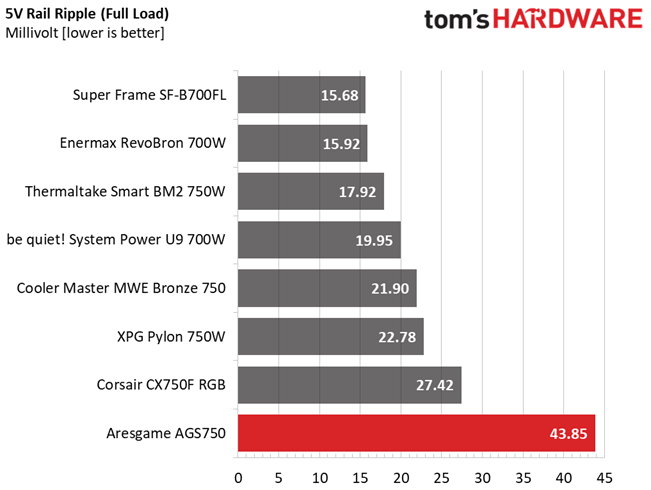
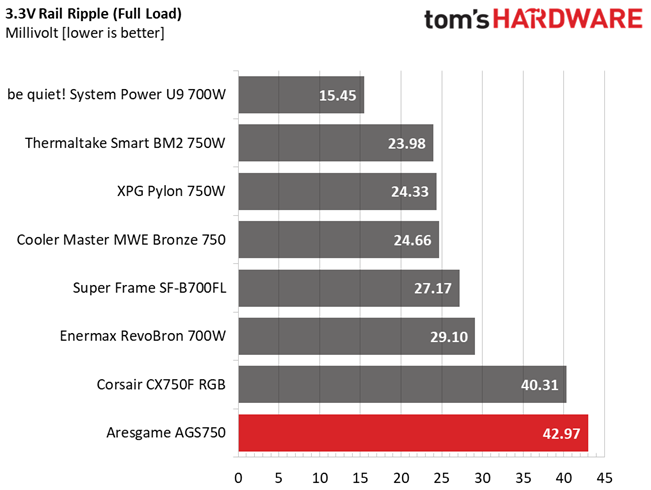
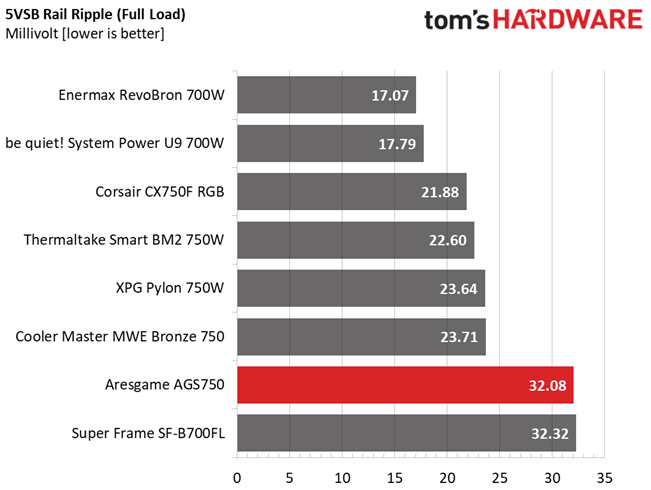
Ripple suppression is mediocre on all rails, especially the minor ones. We didn't expect better results here, given the filtering caps used on the PSU's secondary side.
Ripple At Full Load
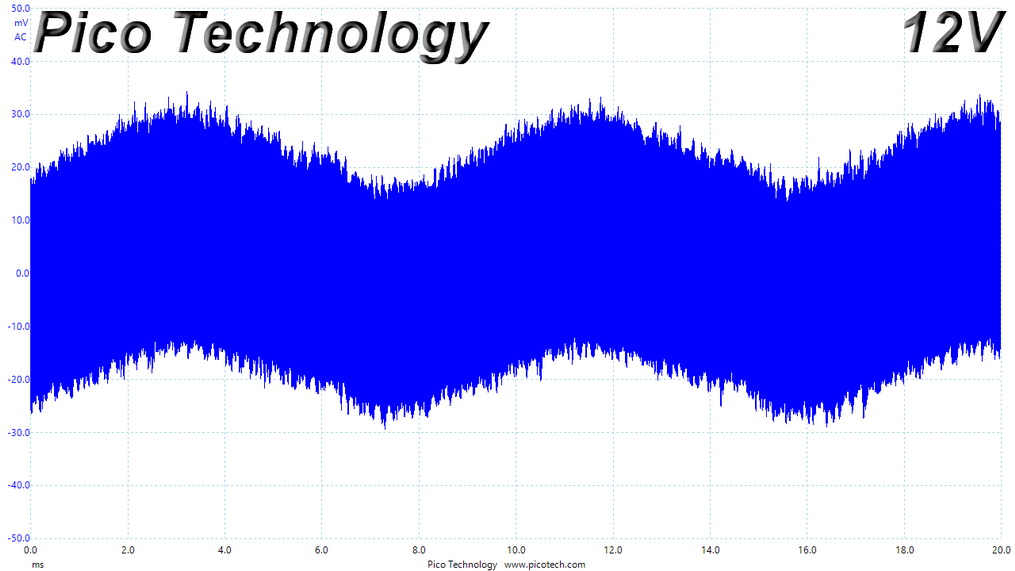



Ripple At 110% Load

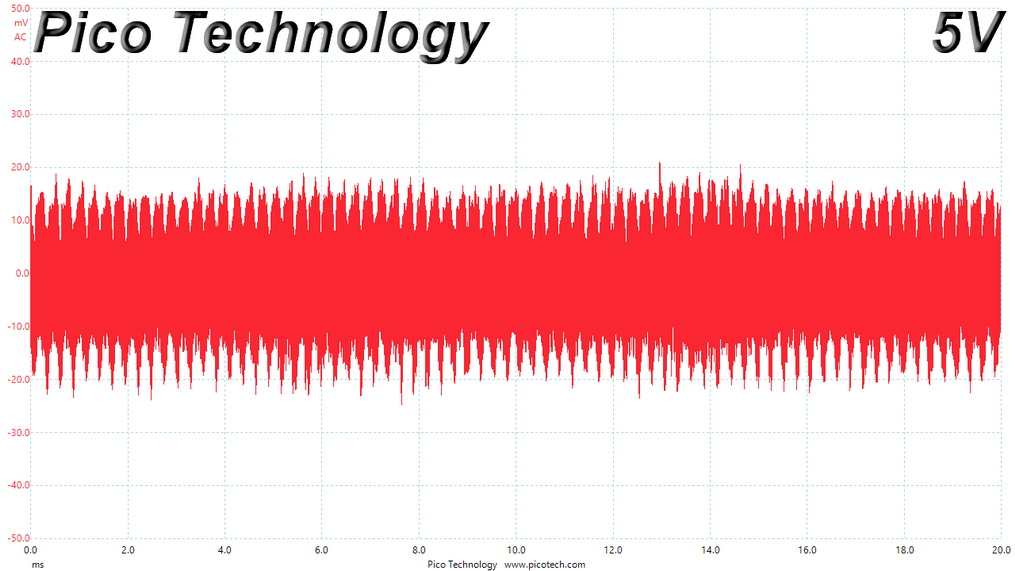
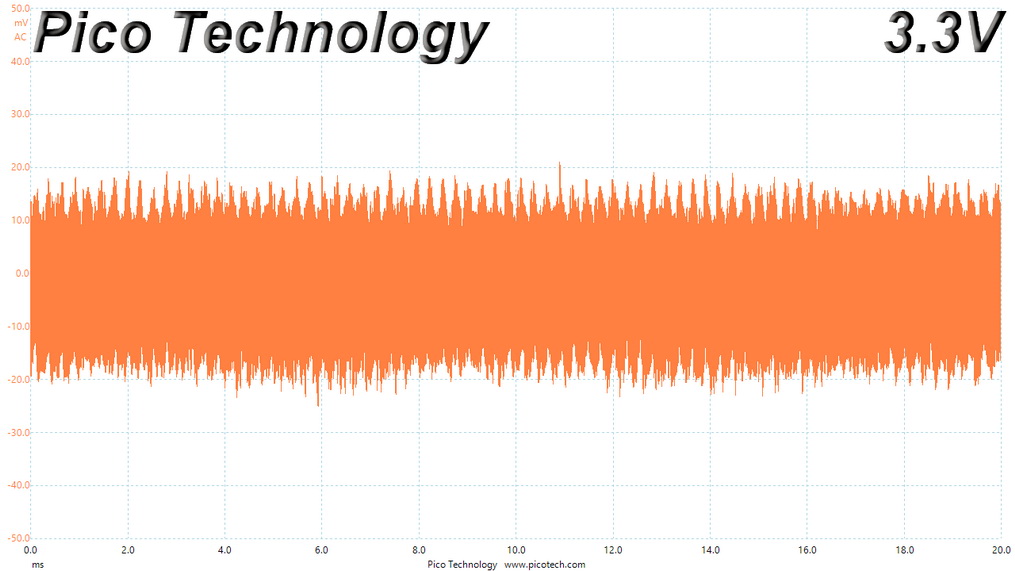

Ripple At Cross-Load 1


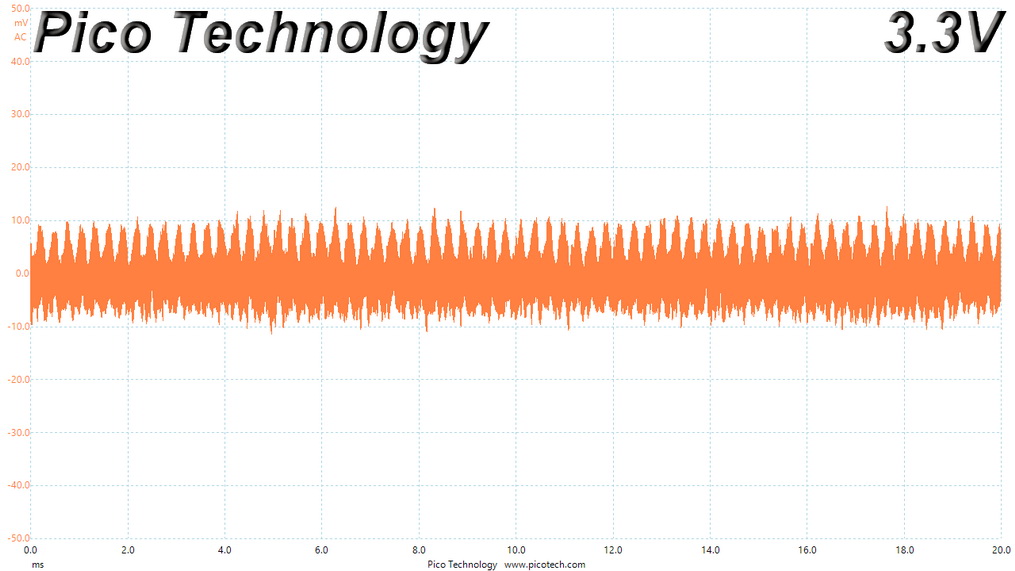

Ripple At Cross-Load 4
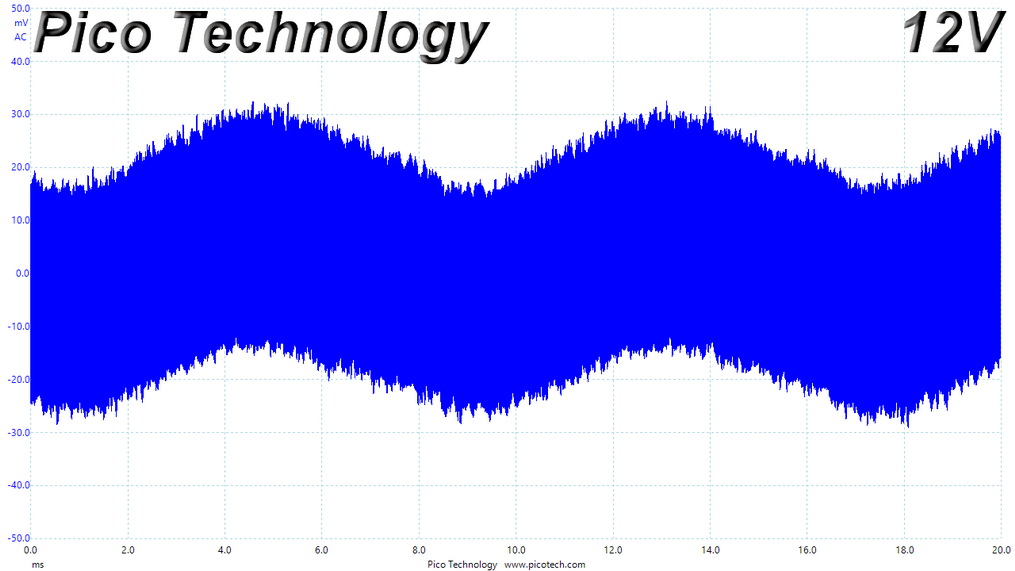
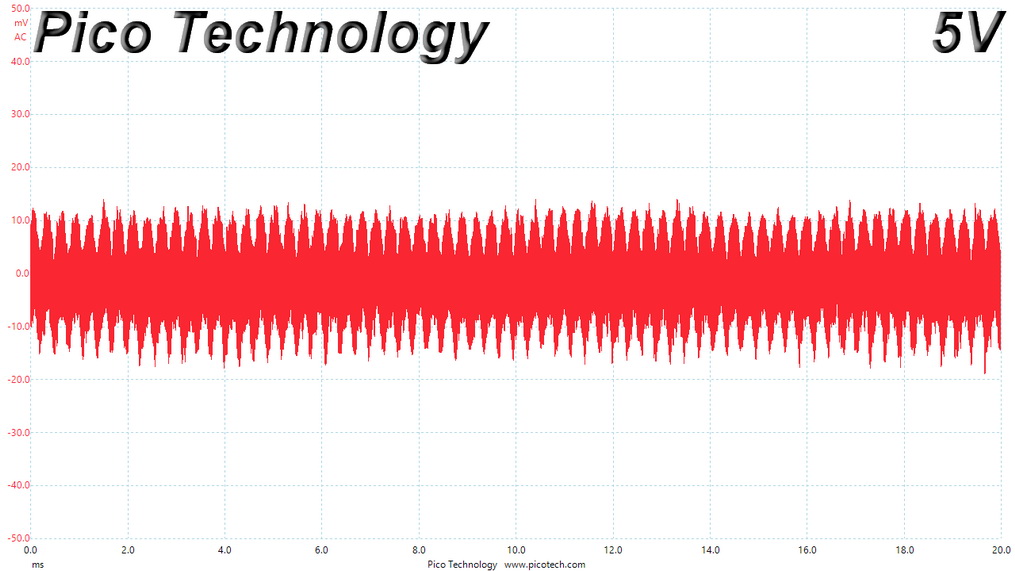
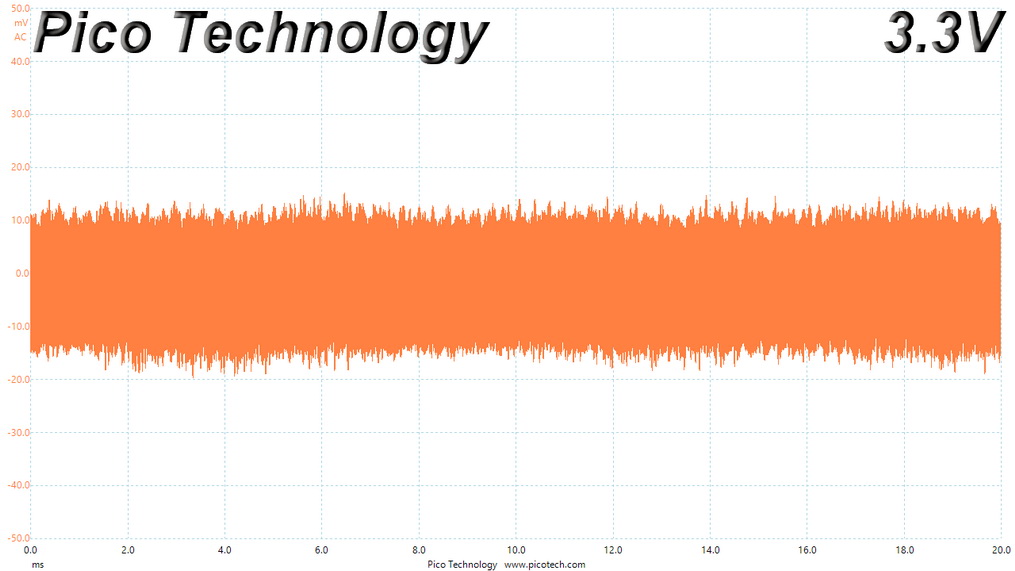
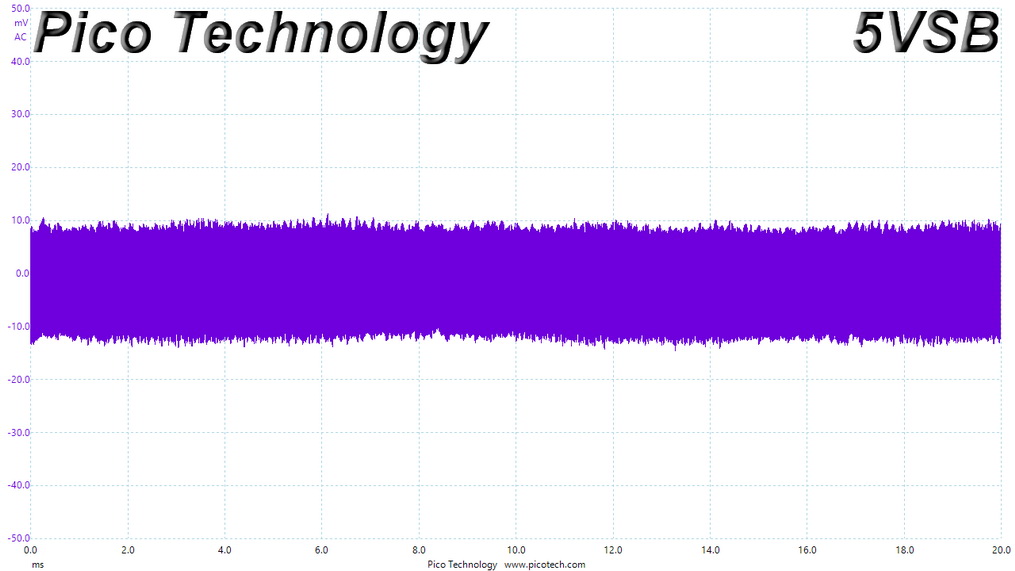
EMC Pre-Compliance Testing – Average & Quasi-Peak EMI Detector Results
Electromagnetic Compatibility (EMC) is the ability of a device to operate properly in its environment without disrupting the proper operation of other nearby devices.
Electromagnetic Interference (EMI) stands for the electromagnetic energy a device emits, and it can cause problems in other nearby devices if too high. For example, it can be the cause of increased static noise in your headphones or/and speakers.
EMI emissions are high below 1MHz, with both average and peak EMI detectors.
MORE: Best Power Supplies
MORE: How We Test Power Supplies
MORE: All Power Supply Content
Current page: Transient Response Tests, Timing Tests, Ripple Measurements and EMC Pre-Compliance Testing
Prev Page Protection Features, DC Power Sequencing, Cross-Load Tests and Infrared Images Next Page Performance, Noise, Efficiency and Power Factor
Aris Mpitziopoulos is a contributing editor at Tom's Hardware, covering PSUs.
-
Aeacus Correction:Reply
OEM of AGS750 is not Aresgame.
Aresgame is just a brand, like Corsair or EVGA.
OEM of AGS750 is: Shenzhenshi Jiumeng Electronics Technology Co.,ltd.
My proof, trademark registration application: https://uspto.report/TM/88619100 -
yrly59e It’s list price or cost may be $80 but I bought this unit at half that price on sale before word was out the efficiency wasn’t up to snuff. My guess is heavy discounting was built into design cuts.Reply
